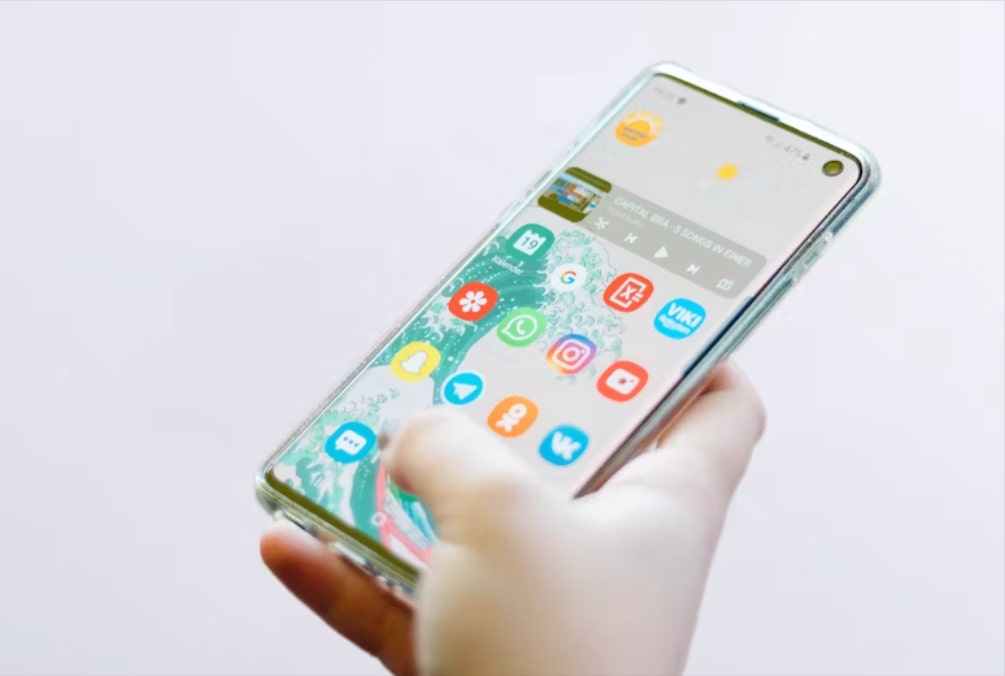
For years, smartphones have been labelled as distractions, particularly when it comes to academics. Everyone’s heard the criticisms: they scatter students’ attention, disrupt their focus, and generally deter them from learning. But as digital technology advances and education evolves, this narrative is proving increasingly erroneous. Modern smartphones offer a variety of features that can actually facilitate learning, from quick access to educational materials to streamlined organisation.
Aside from the usual calling and texting features, smartphones can serve as all-in-one educational platforms that offer a range of tools and features that benefit learners. Whether you’re studying for an exam or working on a group project, the utility of your smartphone can go beyond the conventional. And to maximise all these functionalities, a good data plan that can keep you consistently connected and informed is crucial. A SIM only plan comparison could assist you in identifying a plan that gives you both adequate data and affordability, allowing for uninterrupted access to educational resources.
To drive the point home, this article aims to provide practical insights into how you can transform your smartphone into a powerful tool for academic success.
Reading E-Books and Audiobooks
The convenience of e-books and audiobooks has changed the reading game entirely for today’s students. No longer do you need to lug around heavy books or rush to the library before it closes. Instead, you can access the same materials at your leisure, wherever you are—perhaps while taking the MRT to school or waiting for a friend at a local hawker centre.
Furthermore, the shift to digital reading options is both an eco-friendly and a budget-conscious choice. You’re saving paper in addition to physical space, which aligns with growing global efforts to promote sustainability. Digital versions of books are also often more affordable than their physical counterparts, helping you make the most of your student budget.
Using Educational Apps
Today’s students are no longer dependent on the standardised teaching and learning methods you typically find in traditional classrooms. Educational apps give you access to a wider array of learning experiences, which you can go through at your own pace and shape according to your unique strengths, weaknesses, and needs. If you’re looking to hone your critical thinking and problem solves, for instance, you may benefit from more interactive apps. On the flipside, if it’s your working memory you need to improve, a simple flash card app may be just the thing.
The variety of subjects that educational apps cover is also noteworthy. Whether you’re preparing for a mathematics test, brushing up on your history, or trying to master a new language, there’s likely an app that can assist you. Students who are striving for a well-rounded education will find these apps invaluable for supplementing classroom learning and preparing for assessments.
Facilitating Better Note-Taking and Organisation
If you’ve constantly struggled with note-taking or keeping track of your daily calendar, a smartphone may prove an invaluable tool. You’re no longer confined to jotting down your notes on scraps of paper or physical notebooks. Instead, you’ll find you can take more structured and accessible notes on a smartphone. Try taking advantage of features like folders and search functions, which are common to most note-taking apps. These will make it easier to find, review, and revise your notes later.
Your smartphone can also serve as a planner. With calendar apps, you can set reminders for assignment due dates, examination periods, and other academic milestones. This ensures you won’t overlook important dates and can plan your study schedule more efficiently.
Collaborating and Communicating with Peers
Modern education has long placed a strong emphasis on collaboration between students. Working together gives you the opportunity to learn valuable things like cooperation and conflict resolution, and smartphones facilitate this learning experience in a host of ways. If you’re thinking about texting and voice calls, that’s just the tip of the iceberg. Shared documents and cloud services allow for real-time collaboration, enabling you to work on group projects or study together with peers, even if physical meetings are challenging to arrange.
Apart from academic collaboration, smartphones enable more effortless communication with your instructors. You can easily send emails, share documents, or even schedule virtual meetings. It’s an efficient way to seek clarification on assignments or receive timely feedback, enhancing the overall learning experience.
File Sharing
File sharing used to be a tedious process, involving emails with large attachments or the use of external drives. Smartphones have streamlined this process significantly. File-sharing apps and cloud services enable you to send or receive documents, videos, or any other educational materials with just a few taps. Moreover, rather than doing simple one-on-one exchanges, you can share files with an entire class or study group at once, making it easier to distribute study materials or submissions. This also promotes a culture of collective learning, as students can share useful resources, notes, or even recorded lectures with each other easily.
Practicing Creative Skills
Smartphones are a powerful platform for creating content in addition to consuming it. Whether you’re interested in graphic design, music composition, photography, or video editing, there are various apps that can help you hone your creative skills. For instance, the right apps will enable you to sketch out a quick illustration for a class project or even compose a simple melody as part of your music coursework.
The possibilities are endless and not just confined to the arts. Even if you’re pursuing courses in the sciences or social studies, creative skills like problem-solving and critical thinking can be enhanced through targeted exercises and interactive scenarios available on apps. These apps offer a safe space to experiment, make mistakes, and learn, thereby enriching your educational experience.
Leveraging Accessibility Features
Smartphones have helped raise the bar for inclusivity in modern education and made learning infinitely easier for students with disabilities. Features like screen readers and text-to-speech functionalities can facilitate more fulfilling learning experiences for students with visual or auditory impairments.
Moreover, many educational apps now come with features like subtitles for videos or audio descriptions for graphical content. This makes a wealth of information more accessible and ensures that students with diverse learning needs are not left behind. In short, smartphones are instrumental in democratising education and ensuring that it’s readily available to all, regardless of physical or cognitive abilities.
Smartphones have evolved from mere distractions to valuable educational resources, offering an array of tools and features that cater to diverse learning needs. By redefining the way that you think about this everyday device, you have the opportunity to transform your own academic experience and take ownership of your learning in meaningful and productive ways.



